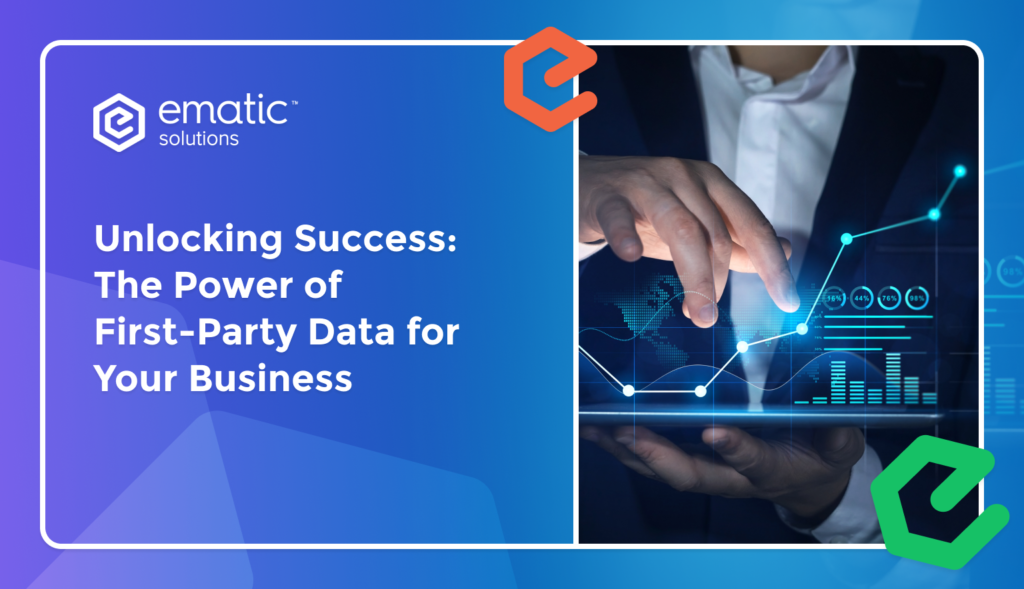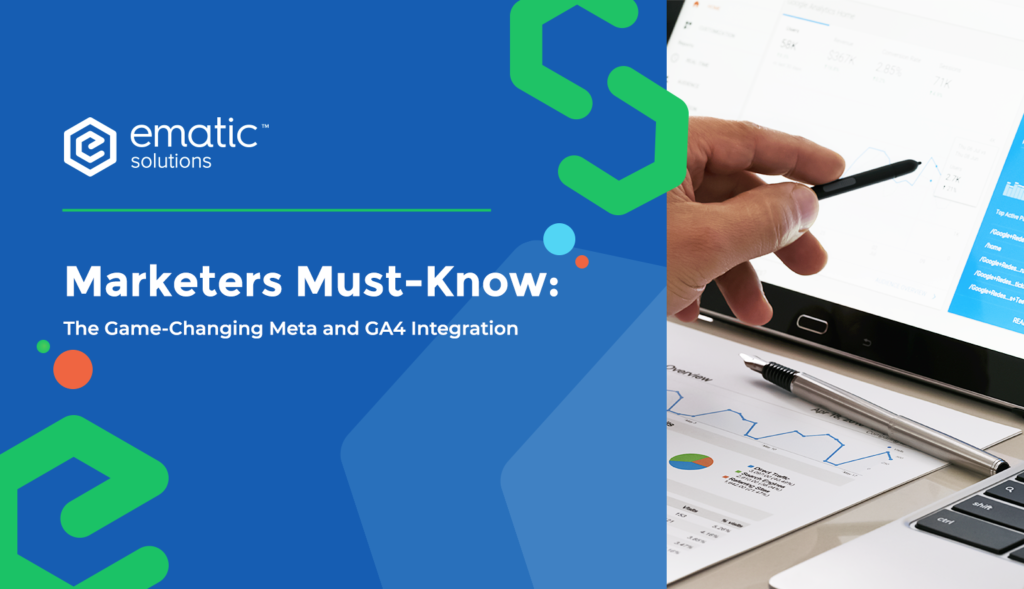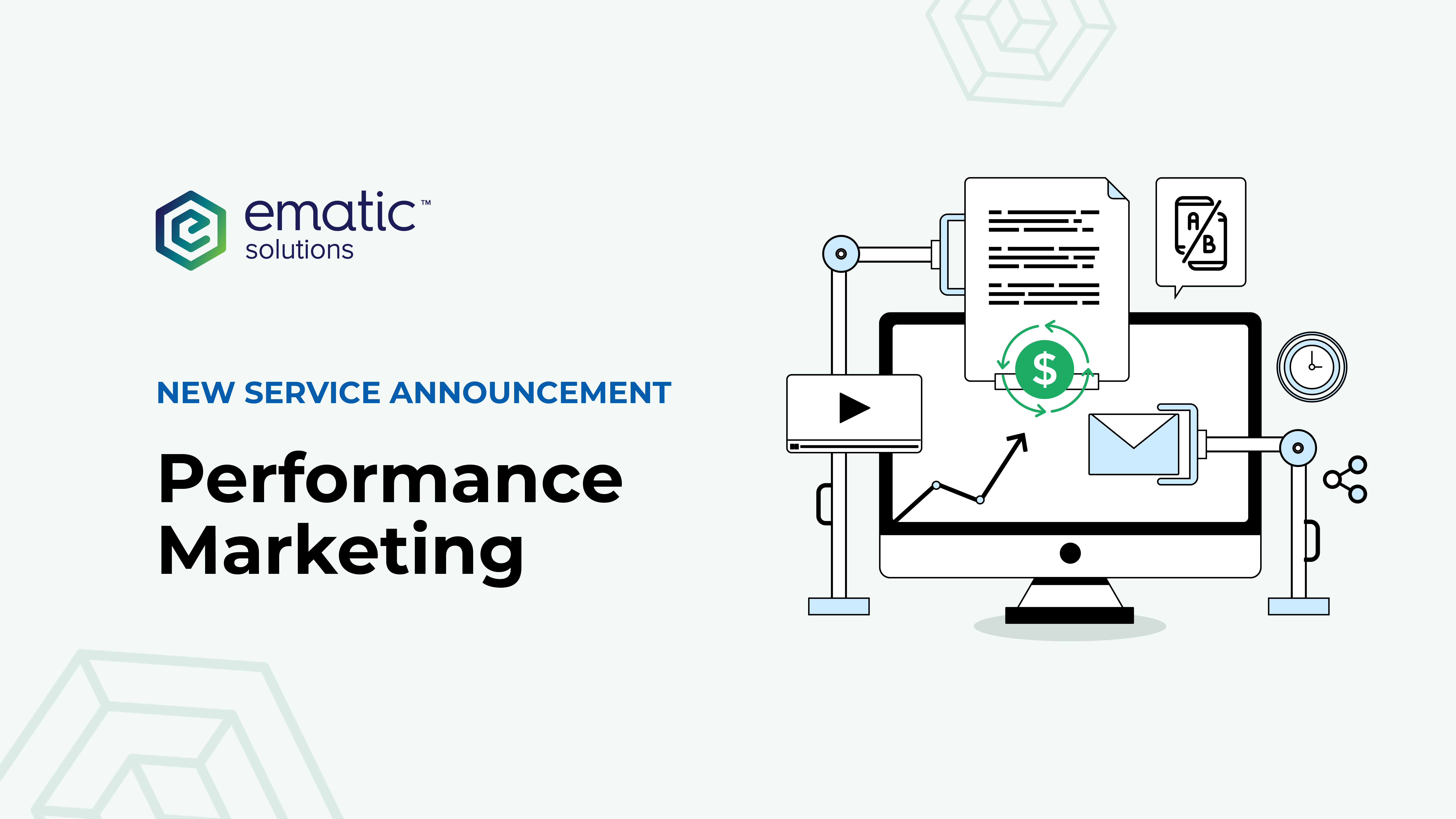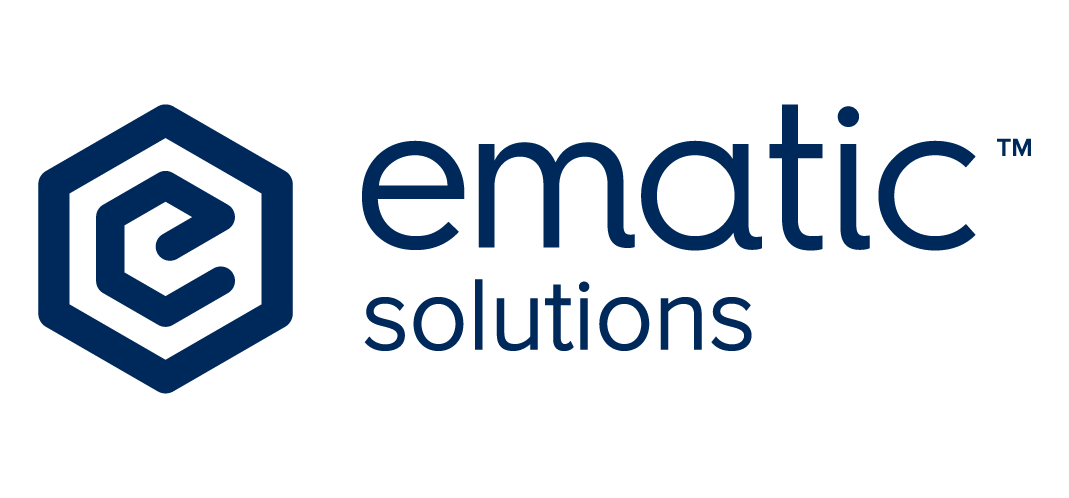Unlocking Success: The Power of First-Party Data for Your Business

In today’s data-driven world, how well do you really know your customers? Harnessing first-party data might be the key to knowing their preferences and driving your business success. This article explores what first-party data is, why it’s essential, how to collect it, and strategies for leveraging it effectively. What is First-Party Data? First-party data is the information you gather directly from your customers through your own channels. Unlike third-party data, which comes from external sources, first-party data is sourced from interactions with your audience, such as: Website interactions: User behavior and activity on your site. Customer surveys: Feedback directly from your customers. CRM systems: Data on customer interactions and history. Social media engagement: Insights from your brand’s social platforms. This type of data is typically more accurate and relevant, reflecting genuine interactions between your business and your customers. Why is First-Party Data Important? Accuracy and Relevance: First-party data is highly reliable because it comes directly from the source, providing true insights into your audience’s preferences. Enhanced Customer Relationships: By understanding customer preferences, you can create personalized experiences that lead to increased satisfaction and loyalty. When customers feel understood, they’re more likely to return. Cost-Effective Marketing: Utilizing first-party data allows for targeted marketing campaigns that are more efficient. This means you can avoid wasting resources on broad strategies that don’t resonate, ultimately boosting your ROI. Compliance and Trust: With tightening data privacy regulations, relying on first-party data helps you stay compliant while building trust with your customers. Transparency in how you collect and use data is key to fostering strong relationships. Informed Decision-Making: Insights from first-party data empower strategic choices about product development and marketing. Improved Advertising Targeting: First-party data enhances your ad campaigns, allowing you to create targeted messaging that resonates with specific audience segments. How Can We Collect First-Party Data? Website and App Analytics: Use analytics tools like Google Analytics to track user behavior on your website and apps. Understanding how customers interact with your platforms reveals their interests and pain points Customer Relationship Management (CRM) Systems: Implement CRM systems to manage and analyze customer interactions. These tools can help you create a comprehensive view of customer behavior and preferences. Social Media Interactions: Pay attention to engagement on your social media platforms. Monitor comments, shares, and likes to gain insights into customer preferences and behaviors. Engagement Through Value: Encourages customers to share their information by offering something in return. This could be discounts, exclusive content, or loyalty rewards that make sharing their data worthwhile. Surveys and Feedback Forms: Regularly seek feedback through surveys. This not only gathers valuable insights but also shows customers that you value their opinions. E-Commerce: Your Greatest Asset In today’s digital landscape, a well-optimized e-commerce website is essential, especially for brands that predominantly focus on online transactions. Not only does it facilitate smooth purchasing experiences, but it also plays a crucial role in collecting valuable first-party data. As the saying goes, “You can’t analyze what you can’t track.” Effective tracking with analytical tools like Google Analytics allows brands to monitor customer journeys, identifying engagement points and drop-off areas. By leveraging this first-party data, businesses can refine their marketing strategies and create personalized experiences that resonate with their audience. Level Up Your Ads Campaign with First Party Data You’ve probably experienced the frustration of irrelevant ads that just don’t resonate with you. Most of us aren’t fans of constant advertising, but smart advertisers know how to get their messages to the right people. That’s where first-party data comes in. Businesses with solid first-party data can craft targeted campaigns that resonate with specific audience segments, resulting in better engagement and higher conversion rates. While platforms like Meta and Google offer audience targeting, first-party data helps brands connect with people who already know and trust their products, boosting the chances of conversion. One major advantage of first-party data is its accuracy. Unlike general interest targeting, which can miss the mark, first-party data reveals exactly who your customers are and what they want. Plus, as data privacy laws evolve, using first-party data keeps you compliant and builds trust with your audience, who value transparency about their information. By integrating this data into performance marketing, businesses can not only refine their targeting but also strengthen customer relationships, creating personalized experiences that encourage loyalty and repeat purchases. In today’s competitive landscape, leveraging first-party data is a key strategy for sustainable growth. Connecting First Party Data to Ad Campaigns: Real-World Examples Here are three scenarios that demonstrate how to connect first-party data to your ad campaigns: Newsletter Subscribers: An F&B brand leverages its Klaviyo list to announce new product launches, offering subscribers early access and exclusive deals. This creates excitement and makes subscribers feel valued. Google Analytics Customer Segmentation: A skincare brand can use GA4 to identify users who often view anti-aging products but haven’t purchased yet. By serving them personalized ads featuring customer reviews and a special discount, we can encourage them to purchase. Lead Form Submission for Retargeting: A SaaS company retargets users who filled out a lead form but didn’t sign up. By sending tailored ads highlighting key benefits and offering a limited-time discount, they prompt potential customers to complete registration. Conclusion In a world where customer insights are crucial, leveraging first-party data is no longer optional, it’s essential for business success. By understanding your audience and personalizing their experiences, you can foster stronger relationships, improve marketing efficiency, and drive sustainable growth. As data privacy concerns continue to shape the landscape, relying on first-party data not only keeps you compliant but also builds trust with your customers. Start integrating these strategies today to unlock the full potential of your business and stay ahead in a competitive market. Embrace the power of first-party data, and watch your business thrive! Ready to elevate your business? Don’t go alone—our team at Ematic Solutions are here to help you. Take advantage of our free consultation to explore how we can guide you in leveraging first-party
Marketers Must-Know: The Game-Changing Meta and GA4 Integration

Picture this: You’re a digital marketer, deeply invested in optimizing campaigns across platforms like Meta Ads. You rely on GA4 for accurate insights into user behavior and conversions, but the reality is far from clear. The numbers simply don’t add up. Meta Ads and Google Ads claim 100 conversions each from a total of 150, while GA4 tells another different story. It’s like trying to solve a puzzle with missing pieces – incredibly frustrating! This is the common struggle for many marketers. The root cause of the problem lies in the varying attribution models employed by different platforms. Each platform has its own method for determining which marketing touchpoint gets the credit for a customer’s final action, like making a purchase. It was like looking at the same campaign through two distorted lenses. It’s like looking at the same thing through two different colored glasses, making it difficult to determine the true impact of each marketing channel. Introducing the Meta Ads and GA4 Integration (Good News!) Now, here’s the good news! Since 2023, Meta has been working on a game-changer integration with GA4. This feature is still in beta phase and Meta has started rolling out this feature to limited numbers of accounts. This integration facilitates better data syncing between platforms, providing a clearer picture of your Meta campaign performance. Unlocking The Benefits Wondering why this integration is so valuable? Here’s why: Streamlined Event Setup and Enhanced Conversion Accuracy: Linking your GA4 account to Meta is quick and simple just in a few steps, enabling you to directly connect your Google Analytics Events to Meta. This integration offers a more accurate view of your campaign performance. Seamless Syncing: Gain deeper understanding by selecting specific GA4 properties for targeted analysis tailored to your campaigns and audience segments. Data Privacy Control: Maintain strong data governance by defining which traffic data source you share with Meta. Accessing the Feature If you’re among the lucky few people with early access, you’ll see a pop-up in your Meta Ads Manager. Simply click “Connect Google Analytics” to begin. Here’s how to find this feature: Within your Meta Ads Manager, navigate to Event Manager. Under Partner Integrations, locate and select Google Analytics. Follow the on-screen instructions to complete the setup process. Impacts on Campaigns According to Meta, advertisers who connected their Meta account with Google Analytics saw a big 22% increase in attributed conversions on Meta. You can start seeing these performance improvements within just two weeks after setting up the integration. Understanding the Mechanism How does it all happen? This beta integration works by leveraging aggregated campaign-level data from Google Analytics to optimize Meta campaign strategies. It combines GA4’s data with Meta’s own tools (pixel and conversion API) to enhance ad performance. To ensure accurate data tracking and attribution in GA4, it’s essential to: Utilize Campaign URL Builder: This tool will help you generate trackable links to help GA4 identify where your website traffic comes from. Define Clear Parameters: Specify your source as “meta,” medium as “paid,” and include your campaign name on each link. Apply UTM-tagged Links: Incorporate these UTM-tagged links directly into your Meta Ads campaigns. Expert Insights from Ematic Solutions Here’s valuable insights from our consultants about this integration: “It’s very crucial that we obtain a comprehensive view of our data across all digital marketing channels. While this integration helps reduce data discrepancies, it’s essential to delve deeper into our backend data to establish a solid foundation for optimization. By comparing the total value and channel-specific performance from our backend systems to GA4, we can identify inconsistencies and make data-driven campaign adjustments.” – Ignatius Restu, Performance Marketing Consultant “With this integration, Meta ads campaigns should be able to perform better as GA4 can provide first party data to Meta to enhance its machine learning. It offers promising benefits for data streamlining and campaign insights, but we need to test it out by ourselves to see the impact across various campaign types. Data discrepancy will likely persist but using UTM parameters correctly can improve our ability to track website traffic and conversions.” – Hendra Wijaya, Analytic Consultant What’s Next? Meta plans to integrate with more analytics and app data in the future. Currently, Meta encourages advertisers to check if they have early access to this feature. However, we’ll need to patiently await the broader rollout of this beta integration. In the meantime, interested in optimizing your Meta Ads campaigns performance? Don’t worry – we’ve got you covered! At Ematic Solutions, we’re here to help you optimize your Meta Ads campaigns. Whether you’re aiming to boost conversions or get a deeper understanding of your customer journey and behavior, our team of experts is ready to assist. We ensure every penny of your ads budget is spent efficiently to deliver the best ROI for you. Let’s have a chat! Contact us today for free consultation. Source: https://www.searchenginejournal.com/meta-pushes-ga4-integration-boasts-22-conversion-boost/521601/ https://web.swipeinsight.app/posts/meta-reveals-more-details-on-the-google-analytics-integration-7686 https://www.linkedin.com/feed/update/urn:li:activity:7209210621324623873/?utm_source=swipeinsight.app&utm_medium=referral
Introducing Ematic’s New Service: Performance Marketing

At Ematic we’re a real data-centric agency and we put a huge emphasis on tracking, A/B testing, and analytics. We believe that your data has the potential to be your most valuable marketing resource, and with the right information in hand, we can help you create scalable and repeatable performance marketing campaigns.
